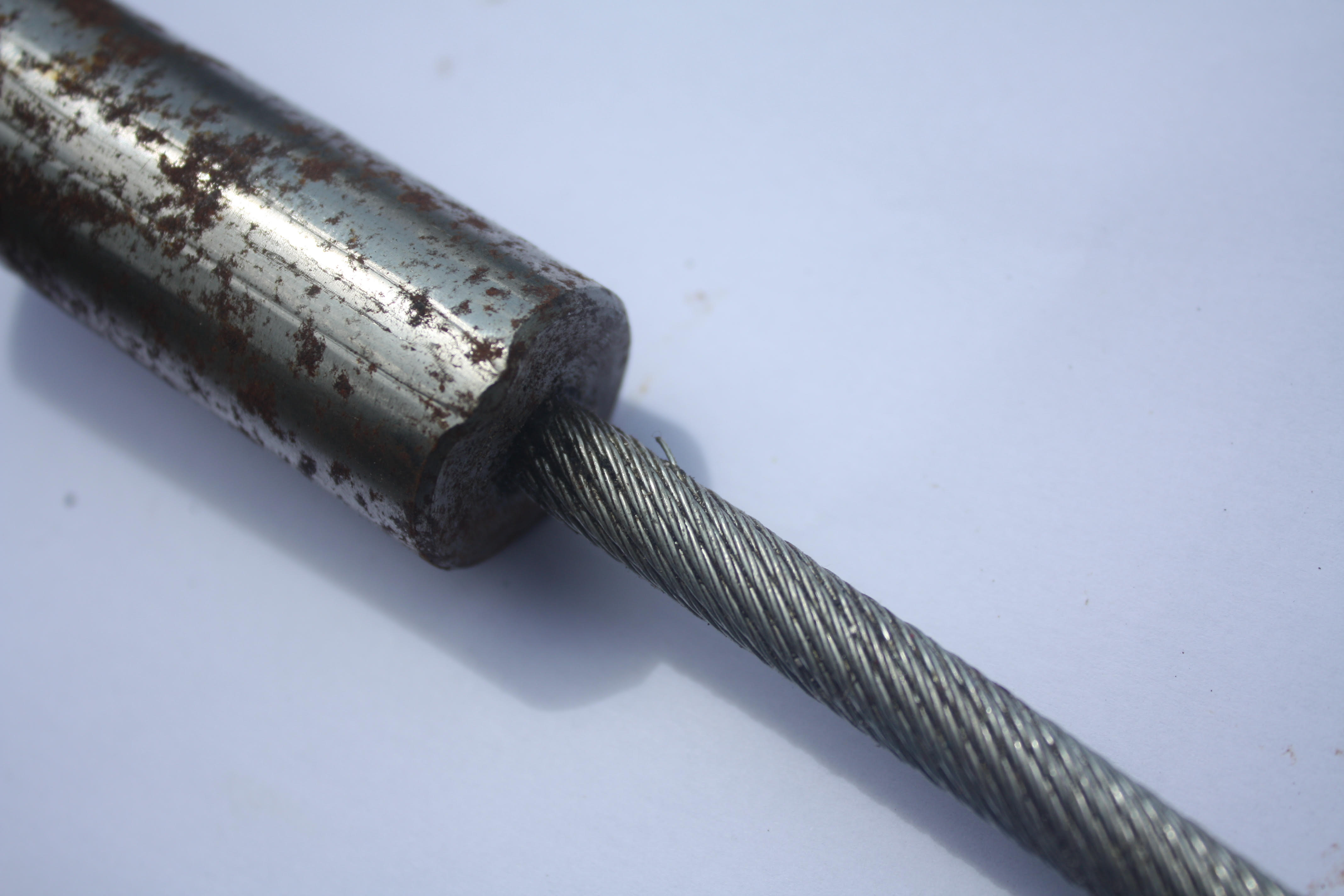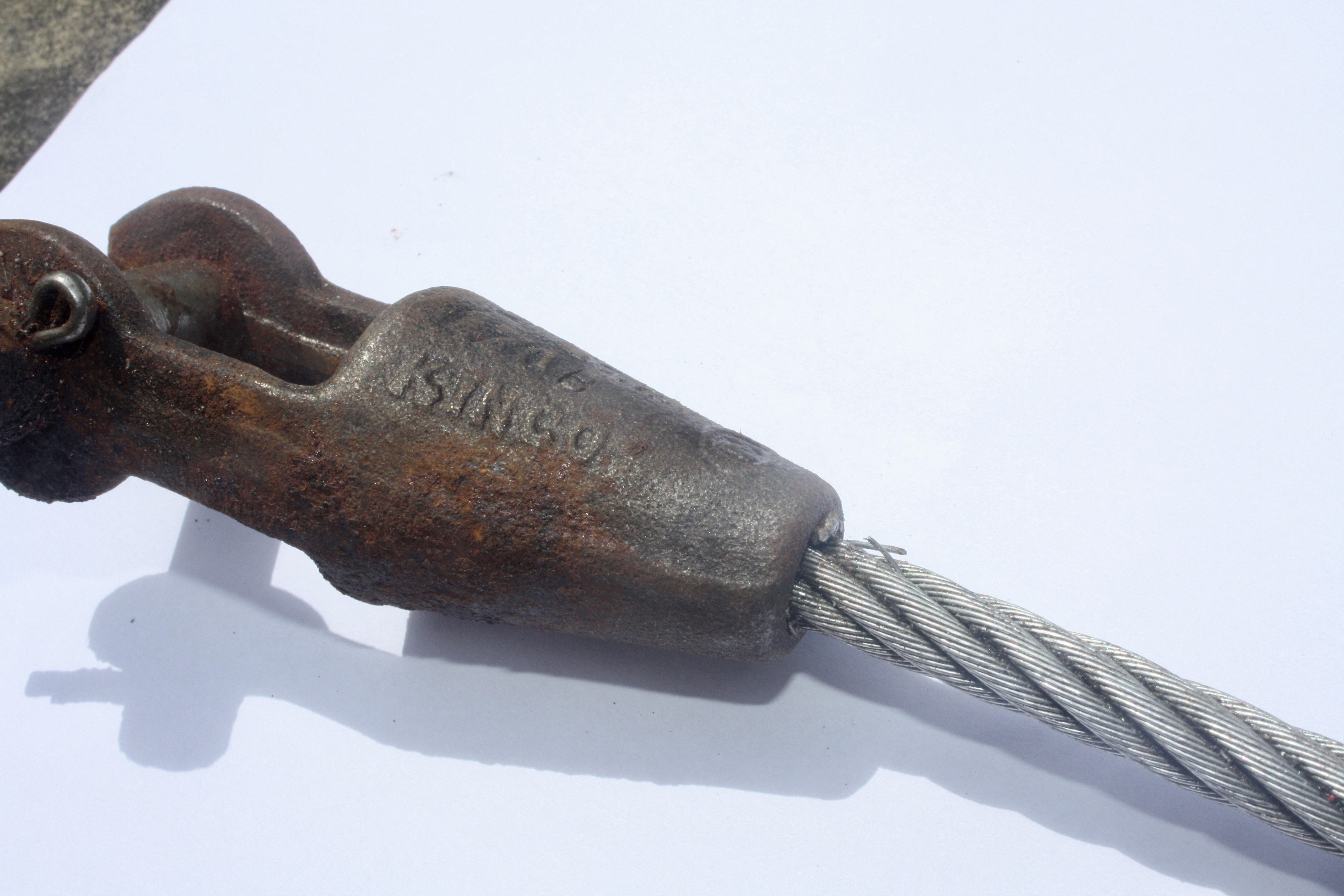Introduction
This article covers termination wire breaks in wire rope, their causes, and the discard criteria provided by ISO 4309.
Why are termination wire breaks such a cause of concern?
Visible wire breaks near the wire rope termination indicate that there are a lot more invisible wire breaks lurking below the surface.
What causes termination wire breaks?
Termination Wire breaks are usually the result of bending fatigue or pulsatory fatigue. Bending fatigue occurs if the rope is bent frequently near a drum, sheave, or hook block. Pulsatory fatigue is the result of vibrations due to the heavy block of steel at the end of the rope. Pulsatory fatigue can be particularly bad in port operations such as bulk unloader crane facilities.

Even one wire break if it is the vicinity may lead you to discard the rope as in this rotation resistant rope with a swaged end stop
Discard Criteria
ISO 4309 provides a discard criterion of two, termination wire breaks. Depending on the condition of the rest of the rope, it may be prudent to discard even in the case of a single termination wire break.

Two or more wire breaks next to the termination means that the rope should immediately be taken out of service
Replace or re-terminate?
The decision of whether to replace the rope or re-terminate depends on the following questions:
- Is there sufficient remaining rope length?
- Is the overall condition of the rope good?
- Can the fitting be replaced?
If the answer to all these questions is yes, re-terminating the rope is an option.
Conclusion
In this article, we have explored some of the causes of broken wires at the termination and the associated discard criteria as provided by ISO 4309. You should remove the rope from service immediately if you find two or more termination wire breaks, and should consider removing the rope even if you find a single termination wire break.
If you enjoyed the article, be sure to give our LinkedIn page a follow to keep up with our update. You can click the button below if you are not already following our page!
Again, thanks for reading,
The Rope IQ team.
Want to find out how our software can help your business?
Request a quick 30 minute demo to find out.
Request a Demo